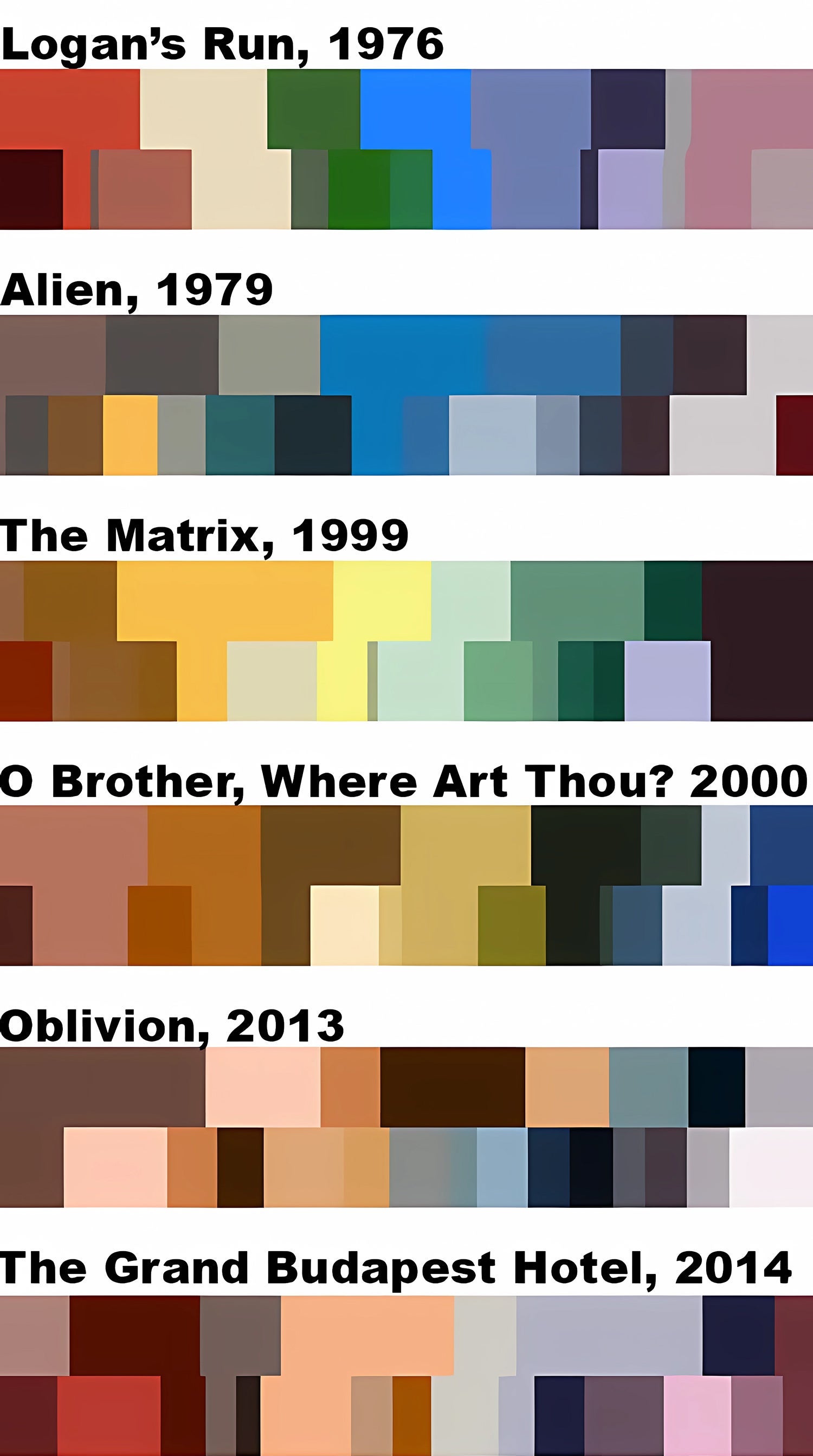From the sepia tones of a Coen brothers film set in the Dust Bowl to a child’s red coat in Schindler’s List, filmmakers have long known the power of colour in movies. Now, computer scientists have analyzed 60 years of movies to paint a picture of the hues used in films.
Using a technique called k-means clustering, researchers at the Cheriton School of Computer Science have analyzed the trailers for more than 29,000 North American movies released between 1960 and 2019.
“We chose to analyze trailers because they typically include many key moments from a film while also being short and accessible to the public,” said Andreea Pocol, a PhD candidate at the Cheriton School of Computer Science and co-author of the study. “Trailers give us a reliable snapshot of a film, so we can extract a lot of data efficiently.”
Their technique produced both more general eight-colour palettes as well as more detailed 15-colour palettes, demonstrating the dominant colours for different data sets, which included specific films, genres and decades. They used the method to generate palettes for individual films — The Shining or The Matrix, for example — as well as groups of films, such as science fiction films or those released between certain dates.
L
to
R:
Cheriton
School
of
Computer
Science
PhD
candidate Andreea
Pocol
and
Adjunct
Assistant
Professor
Lesley
Istead.
Lesley
Istead
is
also
an Assistant
Professor
at
Carleton
University’s School
of
Information
Technology.

Eight- and 15-colour palettes from films of different genres and eras
Read the full article on Waterloo News.
To learn more about the research on which this article is based, please see Lesley Istead, Andreea Pocol, Sherman Siu, William Chen, Alex Zdanowicz, Alex Rowaan, Craig S. Kaplan. The Colour of Horror. Proceedings of the 19th ACM SIGGRAPH European Conference on Visual Media Production. 2022.